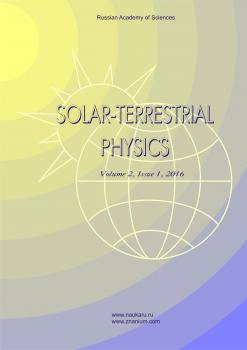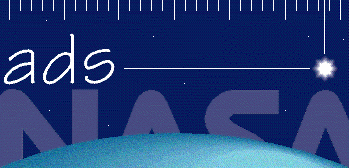с 01.01.1975 по 01.01.2021
Красноярск, Красноярский край, Россия
Москва, г. Москва и Московская область, Россия
УДК 55 Геология. Геологические и геофизические науки
ГРНТИ 37.15 Геомагнетизм и высокие слои атмосферы
ОКСО 05.06.01 Науки о земле
ББК 26 Науки о Земле
ТБК 63 Науки о Земле. Экология
BISAC SCI019000 Earth Sciences / General
Worldwide maps of lightning activity have been obtained from the ground-based World Wide Lightning Location Network (WWLLN) for 2007–2009. We have compiled these maps separately for different seasons and UT periods, using WWLLN data on the time and coordinates of each of the recorded lightning. The total number of flashes of lightning in WWLLN data is by an order of magnitude smaller than in satellite data from Optical Transient Detector and the Lightning Imaging Sensor satellites. However, the key features of the spatial distribution and seasonal trends coincide well. The main difference observed is the absence of diurnal variation (similar to Carnegie curve) in WWLLN data against the satellite one. This concerns the global lightning number as well as its density in major thunderstorm regions. The solar local time dependence is also weak in WWLLN data. We show that in 2007–2009 the mean latitude of lightning observation is shifted to the summer hemisphere up to 10° from the annual mean value. From the beginning of 2007 to the end of 2009, the global monthly average number of flashes of lightning increased threefold. We attribute this fact primarily to improved processing techniques in WWLLN. The constructed maps are necessary for numerical simulation of the Global Electric Circuit.
atmosphere, thunderstorm activity, global distribution, seasonal dependence, daily variation
1. Analysis of Climate Variability. Eds H. von Storch, A. Navarra. Springer-Verlag, 1999, 342 p. DOI:https://doi.org/10.1007/978-3-662-03744-7.
2. Blakeslee R.J., Mach D.M. Bateman M.G., Bailey J.C. Seasonal variations in the lightning diurnal cycle and implications for the global electric circuit. Atmosph. Res. 2014, vol. 135-136, pp. 228-243. DOI:https://doi.org/10.1016/j.atmosres.2012.09.023.
3. Cecil D.J. LIS/OTD Gridded Lightning Climatology Data Collection. 2015. Version 2.3.2015. HRFC_COM_FR. DOIhttps://doi.org/10.5067/LIS/LIS-OTD/DATA311.
4. Ccopa J.G.A., Tacza J., Raulin J.-P., Morales C.A. Estimation of thunderstorms occurrence from lightning cluster recorded by WWLLN and its comparison with the ‘universal’ Carnegie curve. J. Atmos. Solar Terrs. Phys. 2021, vol. 221, 105682. DOI:https://doi.org/10.1016/j.jastp.2021.105682.
5. Denisenko V.V., Rycroft M.J., Harrison R.G. Mathematical simulation of the ionospheric electric field as a part of the Global Electric Circuit. Surveys in Geophysics. 2019, vol. 40, pp. 1-35. DOI:https://doi.org/10.1007/s10712-018-9499-6.
6. Harrison R.G. The Carnegie Curve. Surveys in Geophysics. 2013, vol. 34, pp. 209-232. DOI:https://doi.org/10.1007/s10712-012-9210-2.
7. Hays P.B., Roble R.G. A quasi-static model of global atmospheric electricity. 1. The lower atmosphere. J. Geophys. Res. 1979, vol. 84 (A7), pp. 3291-3305. DOI:https://doi.org/10.1029/JA084iA12p07247.
8. Kaplan J.O., Lau H.-K.K. The WGLC global gridded monthly lightning stroke density and climatology. 2019. PANGAEA. DOI:https://doi.org/10.1594/PANGAEA.904253.
9. Mach D.M., Blakeslee R.J., Bateman M.G. Global electric circuit implications of combined aircraft storm electric current measurements and satellite-based diurnal lightning statistics. J. Geophys. Res. 2011, vol. 116, D05201. DOI:https://doi.org/10.1029/2010JD014462.
10. Mareev E.A. 2010: Global electric circuit research: achievements and prospects, UFN, 180:5 (2010), 527-534; Phys. Uspekhi. 2010, 53:5, pp. 504-511. DOI:https://doi.org/10.3367/UFNr.0180.201005h.0527.
11. Mezuman K., Price C., Galanti E. On the spatial and temporal distribution of global thunderstorm cells. Environ. Res. Lett. 2014. vol. 9 (12), 124023. DOI:https://doi.org/10.1088/1748-9326/9/12/124023.
12. Poklad Y.V., Ermak V.M., Ryakhovskiy I.A. Influence of local time and power of solar X-ray flashes of M and X classes on the variation of frequency of first mode of Schumann resonance. 24th International Symposium on Atmospheric and Ocean Optics: Atmospheric Physics. International Society for Optics and Photonics, SPIE. 2018. vol. 10833, pp. 2091-2094. DOI:https://doi.org/10.1117/12.2504511.
13. Poklad Y.V., Ermak V.M., Ryakhovskiy I.A., Rybakov V. Variation of frequency of first modeof schumann resonance under solar X-ray flashes and its relation with helio-geophysical conditions. 25th International Symposium on Atmospheric and Ocean Optics: Atmospheric Physics. International Society for Optics and Photonics, SPIE. 2019, vol. 11208, pp. 1910-1913. DOI:https://doi.org/10.1117/12.2540671.
14. Rodger C.J., Brundell J.B., Dowden R.L., Thomson N.R. Location accuracy of long distance VLF lightning location network. Ann. Geophys. 2004, vol. 22, pp. 747-758. DOI:https://doi.org/10.5194/angeo-22-747-2004.
15. Rycroft M.J., Israelsson S., Price C. The global atmospheric electric circuit, solar activity and climate change. J. Atmos. Solar-Terr. Phys. 2000, vol. 62, pp. 1563-1576. DOI:https://doi.org/10.1016/S1364-6826(00)00112-7.
16. Salby M.L. Sampling theory for asynoptic satellite observations Part I: Space-time spectra, resolution and aliasing. J. Atmos. Sci. 1982a, vol. 39, pp. 2577-2600. DOI:https://doi.org/10.1175/1520-0469(1982)039<2577:STFASO>2.0.CO;2.
17. Salby M.L. Sampling theory for asynoptic satellite observations. Part II: Fast Fourier synoptic mapping. J. Atmos. Sci. 1982b, vol. 39 (11), pp. 2601-2614. DOI:https://doi.org/10.1175/1520-0469(1982)039<2601:STFASO>2.0.CO;2.
18. Tinsley B.A. Influence of the solar wind on the global electric circuit, and inferred effects on cloud microphysics, temperature, and dynamics of the troposphere. Space Sci. Rev. 2000, vol. 94, pp. 231-258. DOI:https://doi.org/10.1023/A:1026775408875.
19. Williams E.R. Lightning and climate: A review. Atmos. Res. 2005, vol. 76, pp. 272-287. DOI:https://doi.org/10.1016/j.atmosres.2004.11.014.
20. URL: https://wwlln.net (accessed October 20, 2021).

















